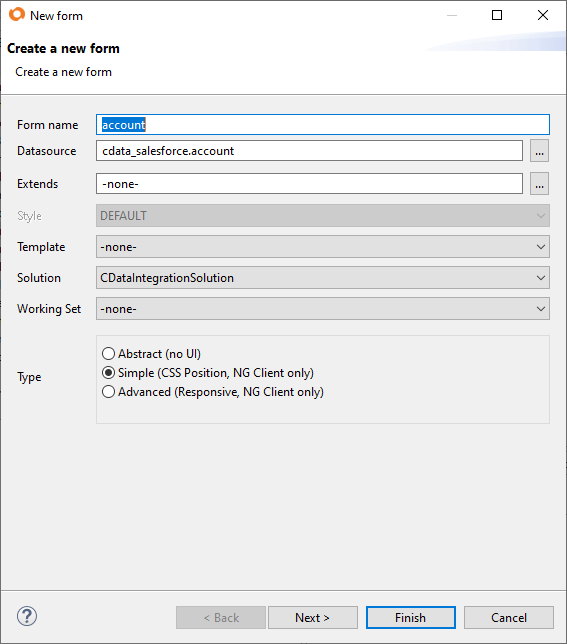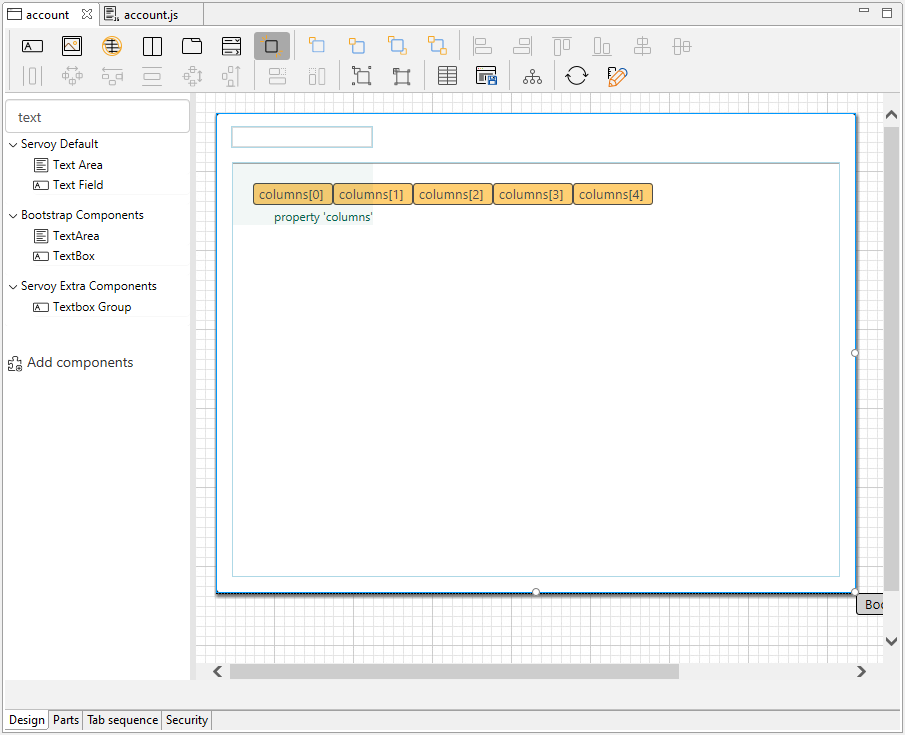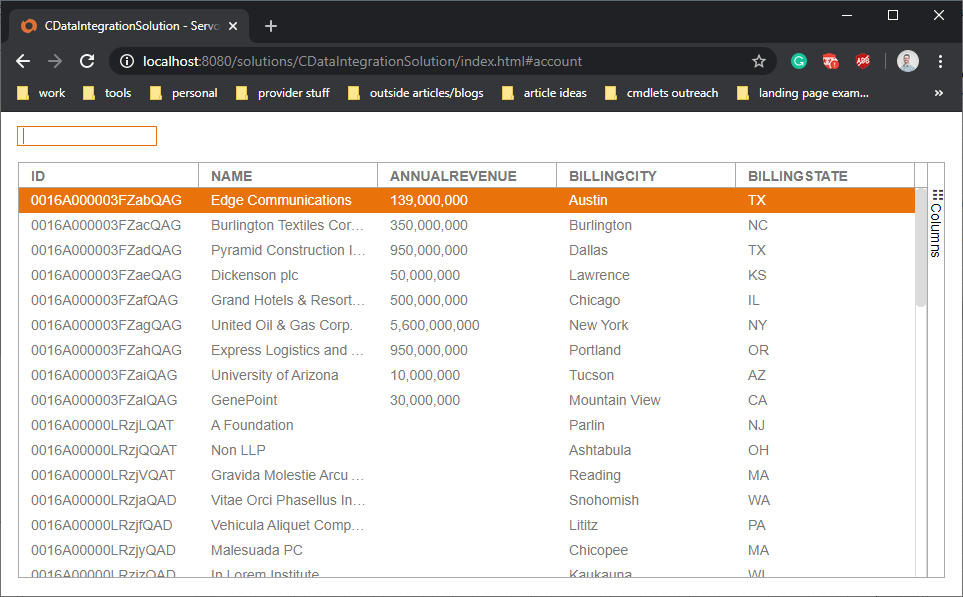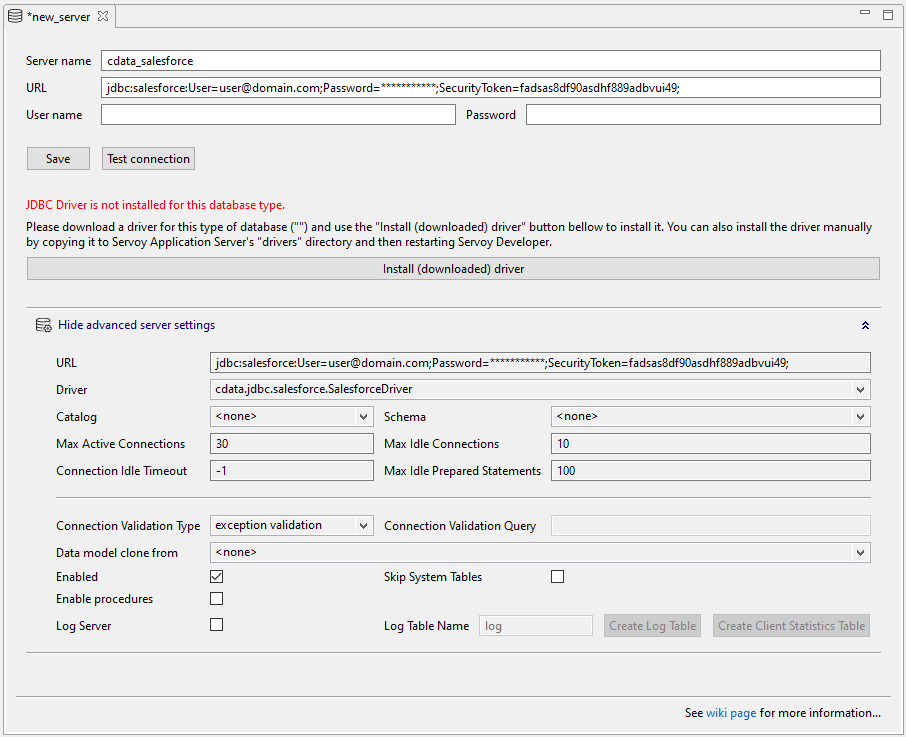Discover how a bimodal integration strategy can address the major data management challenges facing your organization today.
Get the Report →Build Bitbucket-Connected Web Apps in Servoy
Use Servoy Developer to easily connect to Bitbucket data and build web apps with connectivity to live Bitbucket data.
Servoy is a rapid application development and deployment platform. When paired with the CData JDBC Driver for Bitbucket, users can build Bitbucket-connected apps that work with live Bitbucket data. This article describes how to connect to Bitbucket from Servoy and build a simple web app to display and search Bitbucket data.
With built-in optimized data processing, the CData JDBC Driver offers unmatched performance for interacting with live Bitbucket data. When you issue complex SQL queries to Bitbucket, the driver pushes supported SQL operations, like filters and aggregations, directly to Bitbucket and utilizes the embedded SQL engine to process unsupported operations client-side (often SQL functions and JOIN operations). Its built-in dynamic metadata querying lets you work with Bitbucket data using native data types.
Connect to Bitbucket in Servoy Developer
To build Bitbucket-connected apps, you need to first create a data provider in Servoy Developer using the CData JDBC Driver for Bitbucket.
- Install the JDBC Driver.
- Copy the JDBC Driver JAR file. (cdata.jdbc.bitbucket.jar) to the /application_server/drivers/ directory in the installation directory for Servoy.
- Open Servoy Developer.
- In the Solution Explorer, right-click Database Server (under Resources) and choose "Connect to existing database" -> "empty."
- Name the server.
- Click to show the advanced server settings.
Set the URL, for example: jdbc:bitbucket:Workspace=myworkspaceslug;Schema=InformationInitiateOAuth=GETANDREFRESH
Built-In Connection String Designer
For assistance in constructing the JDBC URL, use the connection string designer built into the Bitbucket JDBC Driver. Either double-click the JAR file or execute the jar file from the command-line.
java -jar cdata.jdbc.bitbucket.jarFill in the connection properties and copy the connection string to the clipboard.
For most queries, you must set the Workspace. The only exception to this is the Workspaces table, which does not require this property to be set, as querying it provides a list of workspace slugs that can be used to set Workspace. To query this table, you must set Schema to 'Information' and execute the query SELECT * FROM Workspaces>.
Setting Schema to 'Information' displays general information. To connect to Bitbucket, set these parameters:
- Schema: To show general information about a workspace, such as its users, repositories, and projects, set this to Information. Otherwise, set this to the schema of the repository or project you are querying. To get a full set of available schemas, query the sys_schemas table.
- Workspace: Required if you are not querying the Workspaces table. This property is not required for querying the Workspaces table, as that query only returns a list of workspace slugs that can be used to set Workspace.
Authenticating to Bitbucket
Bitbucket supports OAuth authentication only. To enable this authentication from all OAuth flows, you must create a custom OAuth application, and set AuthScheme to OAuth.
Be sure to review the Help documentation for the required connection properties for you specific authentication needs (desktop applications, web applications, and headless machines).
Creating a custom OAuth application
From your Bitbucket account:
- Go to Settings (the gear icon) and select Workspace Settings.
- In the Apps and Features section, select OAuth Consumers.
- Click Add Consumer.
- Enter a name and description for your custom application.
- Set the callback URL:
- For desktop applications and headless machines, use http://localhost:33333 or another port number of your choice. The URI you set here becomes the CallbackURL property.
- For web applications, set the callback URL to a trusted redirect URL. This URL is the web location the user returns to with the token that verifies that your application has been granted access.
- If you plan to use client credentials to authenticate, you must select This is a private consumer. In the driver, you must set AuthScheme to client.
- Select which permissions to give your OAuth application. These determine what data you can read and write with it.
- To save the new custom application, click Save.
- After the application has been saved, you can select it to view its settings. The application's Key and Secret are displayed. Record these for future use. You will use the Key to set the OAuthClientId and the Secret to set the OAuthClientSecret.
![Using the built-in connection string designer to generate a JDBC URL (Salesforce is shown.)]()
- Select the Driver class you just copied, for example, cdata.jdbc.bitbucket.BitbucketDriver
![Connecting to data through the JDBC Driver (Salesforce is shown).]()
Build a Bitbucket-Connected Web App
Once you have configured the connection to Bitbucket in the Servoy Developer resources, you are ready to build apps with access to live Bitbucket data.
Create a New Solution
- In the Server Explorer, right-click "All solutions" and select "Create new solution."
- Name the solution.
- Select the checkbox to include the "search" module.
- Click "Finish."
Create a New Form
Right-click "Forms" and select "Create new form."
- Name the form.
- Select a Datasource.
- Set the type (e.g., Simple) and click "Finish."

Add a Data Grid to the Form
- Drag a Data Grid component (from Servoy NG-Grids) onto the form.
Drag a column component onto the Data Grid and set the "dataprovider" property for each column component to a column from the Bitbucket "table" (e.g., Title from the Issues table).
Continue adding columns as desired.
Add Searching to the App
Note that the "svySearch" extension is required to add search functionality (included by default when you create a new solution). If you did not add the extension when you created the solution or you are modifying an existing solution, you can add the search module by right-clicking Modules (in the solution) and selecting "Add Module." Select "svySearch" and click "OK."
- Drag a Text Field component onto the Form.
- Right-click the Form and select "Open in Script Editor."
- Create a new variable (JavaScript) to hold the search value:
var searchText = '';
- Back on the Form, in the Text Field properties:
- Set the "dataprovider" property to the Form variable you just created.
- Double-click to add a method for the onAction event.
- Click to create the method in "Form," name the method (e.g., onEnter), and click "Create private."
- Click "OK & Show."
- Add the following JavaScript to the JavaScript file to use the Servoy framework to implement searching bound data based on the text in the Text Field:
var search = scopes.svySearch.createSimpleSearch(foundset).setSearchText(searchText); search.setSearchAllColumns(); search.loadRecords(foundset);

Save and Launch the App
Save the form and JavaScript file, then click Run -> Launch NGClient to start the web app.

Download a free, 30-day trial of the CData JDBC Driver for Bitbucket and start building Bitbucket-connected apps with Servoy. Reach out to our Support Team if you have any questions.







